How First-Time Head Coaches have Fared at Oklahoma
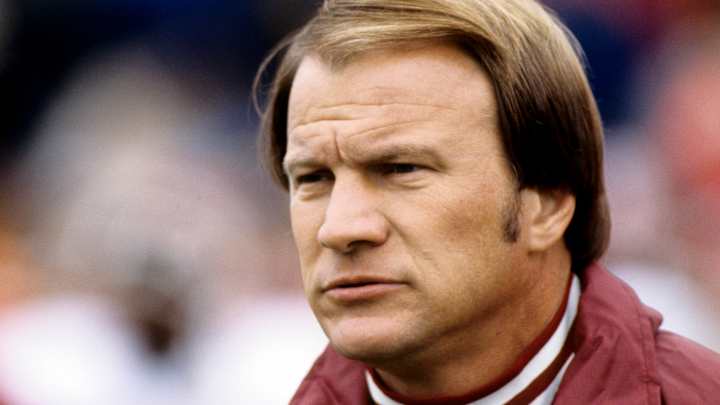
Like many of his predecessors, new Oklahoma coach Brent Venables has never been a head coach before.
Here's a look back at how Oklahoma’s last 10 first-time head coaches fared in their debut:
Sept. 25, 1937: Tom Stidham
Opponent: at Tulsa
Outcome: 19-7 Loss
“The Monster” wasn’t born until Bud Wilkinson arrived in 1947, but Oklahoma had plenty of good teams over the first half of the 20th century.
Tom Stidham’s teams from 1937-40 went 27-8-3 (.750), including a memorable 10-1 campaign in 1938.
But Stidham’s debut game was a rough one.
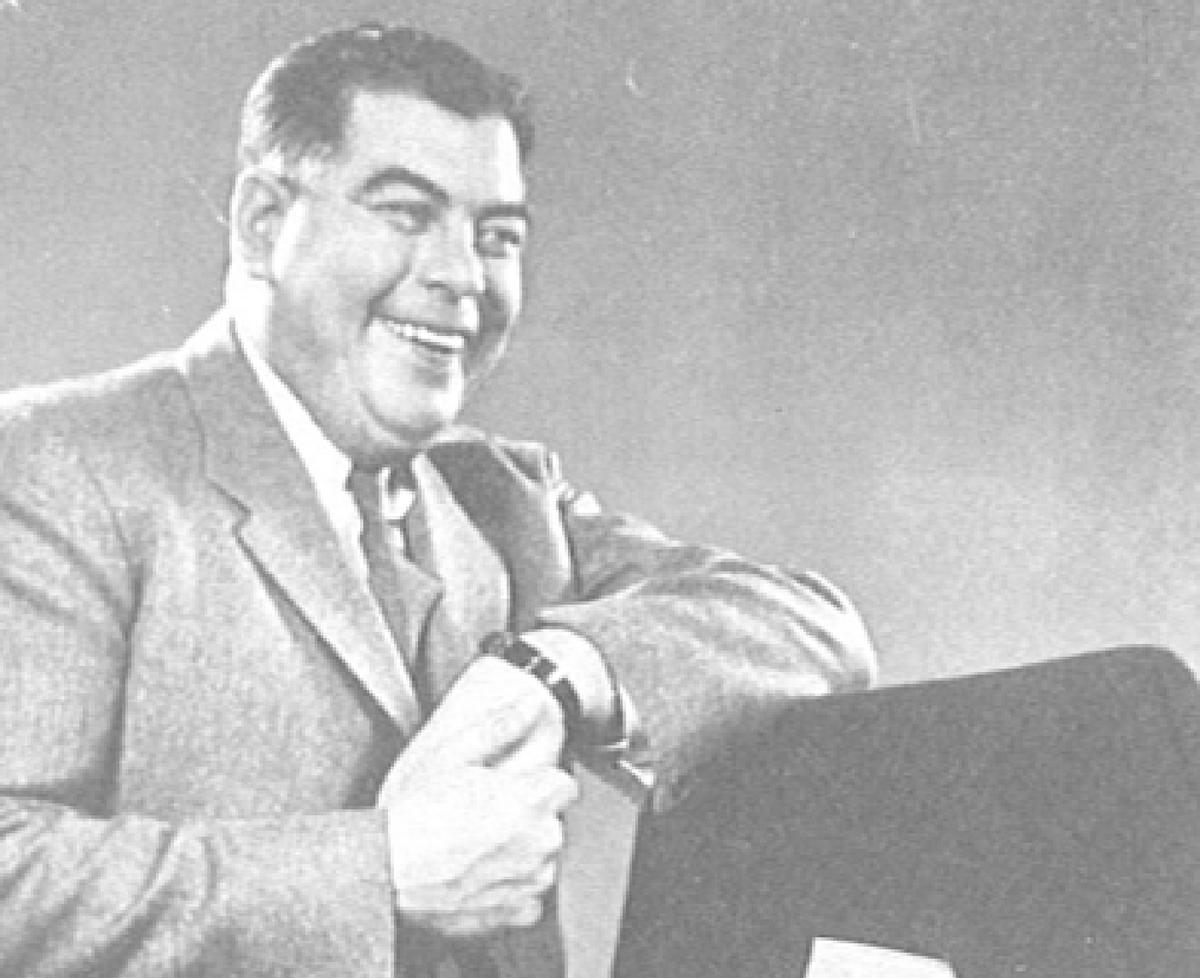
Stidham — who doubled as athletic director for four years — was an Oklahoma native (Checotah) who served as the OU line coach in 1935-36 under Lawrence “Biff” Jones before leaving for Marquette and eventually four years in the AAFC and NFL.
With future TV icon Walter Cronkite calling the action on radio (his only season on the mic in Norman), Stidham’s Sooners went to Tulsa a 14-point underdog and took a 19-7 loss at Skelly Field.
OU led 7-6 in the third quarter on Jack Baer’s 11-yard touchdown pass, but TU scored on a long pass on the next play, then ran back a punt for another TD in the fourth quarter.
Sept. 26, 1947: Bud Wilkinson
Opponent: at Detroit
Outcome: 24-20 Win
With all due respect to Jim Tatum, the consensus from Sooner Nation is that his greatest accomplishment at OU was hiring Bud Wilkinson — and then leaving for Maryland a year later.
Tatum had been a head coach before but lost his OU debut to Army (turns out a lot of folks lost to the U.S. Army in the ‘40s). Tatum convinced president George Cross and athletic director Jap Haskell to let him hire Wilkinson from Iowa Pre-Flight (via Minnesota), and Charles Burnham “Bud” Wilkinson soon became an Oklahoma legend.
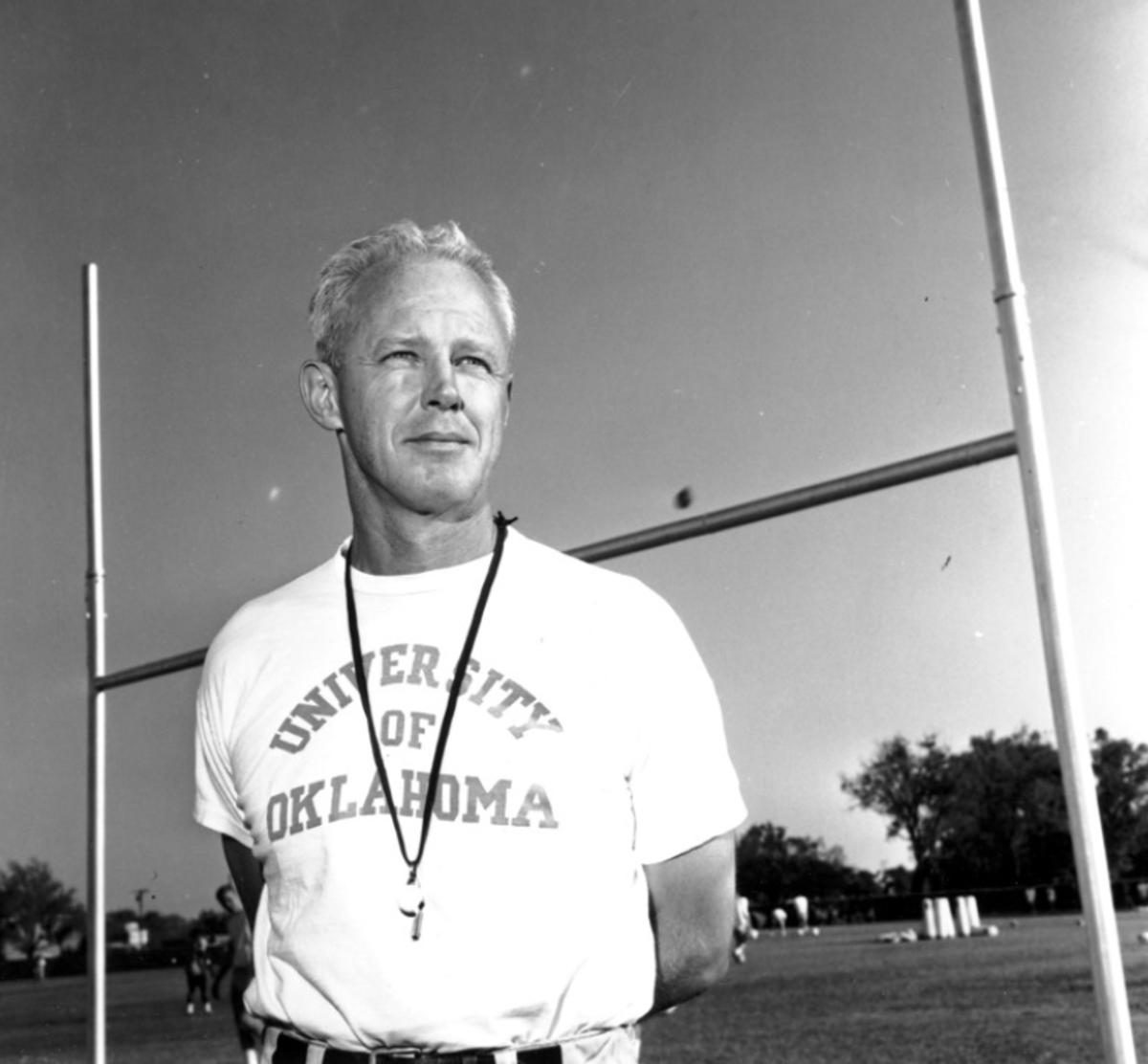
Wilkinson stuck with the Split-T formation he and Tatum installed the year before — an integral part of OU football history and a formation he’d learned at Iowa Pre-Flight under future Missouri coaching legend Don Faurot.
Future broadcasting luminary Curt Gowdy was the Sooners’ play-by-play voice as OU started Wilkinson’s first season as head coach with a 2-2-1 record.
Game one of the Wilkinson era, though, went largely according to plan — a 24-20 win at Detroit Mercy — because of QB Jack Mitchell, halfback (and future Longhorn coaching lion) Darrell Royal and All-Americans guard Buddy Burris and center John Rapacz.
It was 7-7 late in the first quarter, and Wilkinson blamed the Titans’ 56-yard touchdown on a rookie coaching mistake. When Myrle Greathouse came to the sideline with a busted chinstrap, the coaching staff didn’t send in his replacement, and Detroit’s John Kurkowski exploited the 10-man defense with a 56-yard TD run.
Mitchell, who led the nation in punt returns the year before, went 60 yards with a runback in the second quarter to make it 17-7, and built it back to 24-14 in the third quarter before Detroit cut it to 24-20, then made one last push.
Sept. 19, 1964: Gomer Jones
Opponent: at Maryland
Outcome: 13-3 Win
Bud Wilkinson stepped away from OU the previous January — at the tender age of 47, four years younger than Brent Venables — for an opportunity to run for political office. After winning 145 games — including 47 straight — and 14 conference titles, he lost his race for the U.S. Senate, and it hit him hard.
Gomer Jones was Wilkinson’s assistant for 17 years, and he limped through two seasons: 6-4-1 and 3-7 before he resigned.
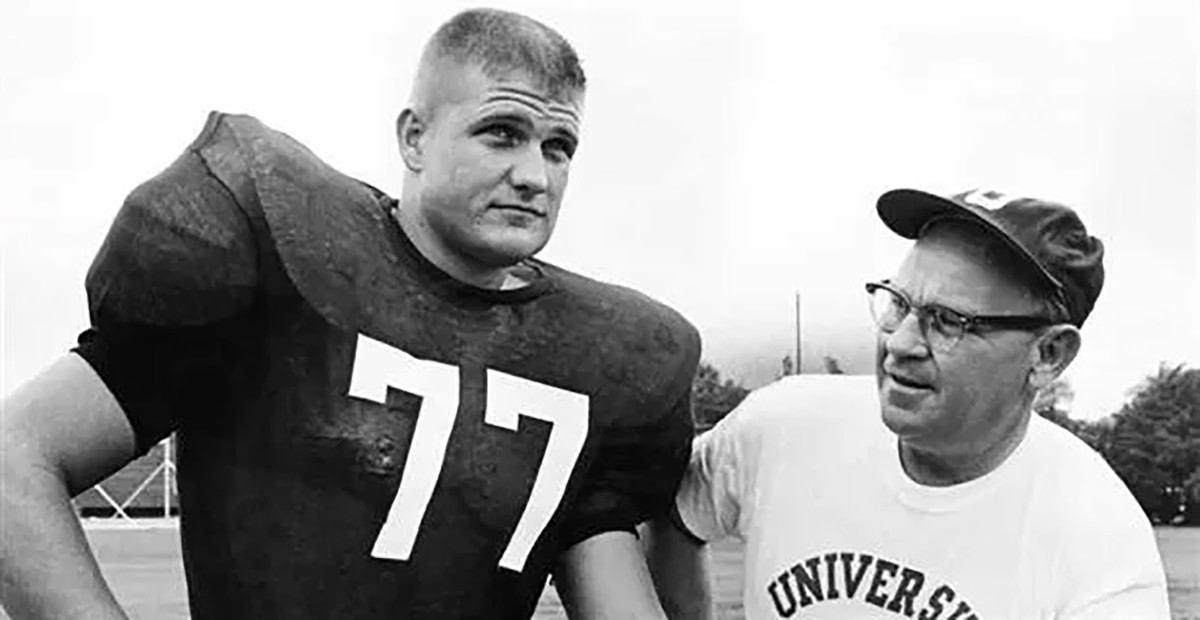
With names like Ralph Neely and Lance Rentzel and Jim Grisham, it wasn’t for lack of talent. The Sooners opened Jones’ inaugural season ranked No. 2 nationally, but needed a 90-yard pass in the final minutes from backup quarterback John Hammond to the speedy Rentzel.
It was brilliant coaching by Jones, who called Hammond off the bench to take over at the 10-yard line with 3 1/2 minutes to play and gave the Sooners a 6-3 lead that went to 13-3 after a late turnover.
Jones eventually stepped away after just two seasons because he said he could no longer stand the criticism from OU fans and local media.
Sept. 17, 1966: Jim Mackenzie
Opponent: Oregon
Outcome: 17-0 Win
After Gomer Jones’ resignation, Oklahoma offered the job to Texas coach (and former Sooner All-American) Darrell Royal, who turned it down. It was also reported that OU tried to hire Georgia’s Vince Dooley and Tennessee’s Doug Dickey, but settled on Mackenzie, who was an assistant under Frank Broyles at Arkansas.
Hiring Mackenzie wasn’t OU’s first choice, but it did eventually open the door for another former Razorback and future hall of famer to take the reins in Norman — someone who embraced “feeding the monster.”
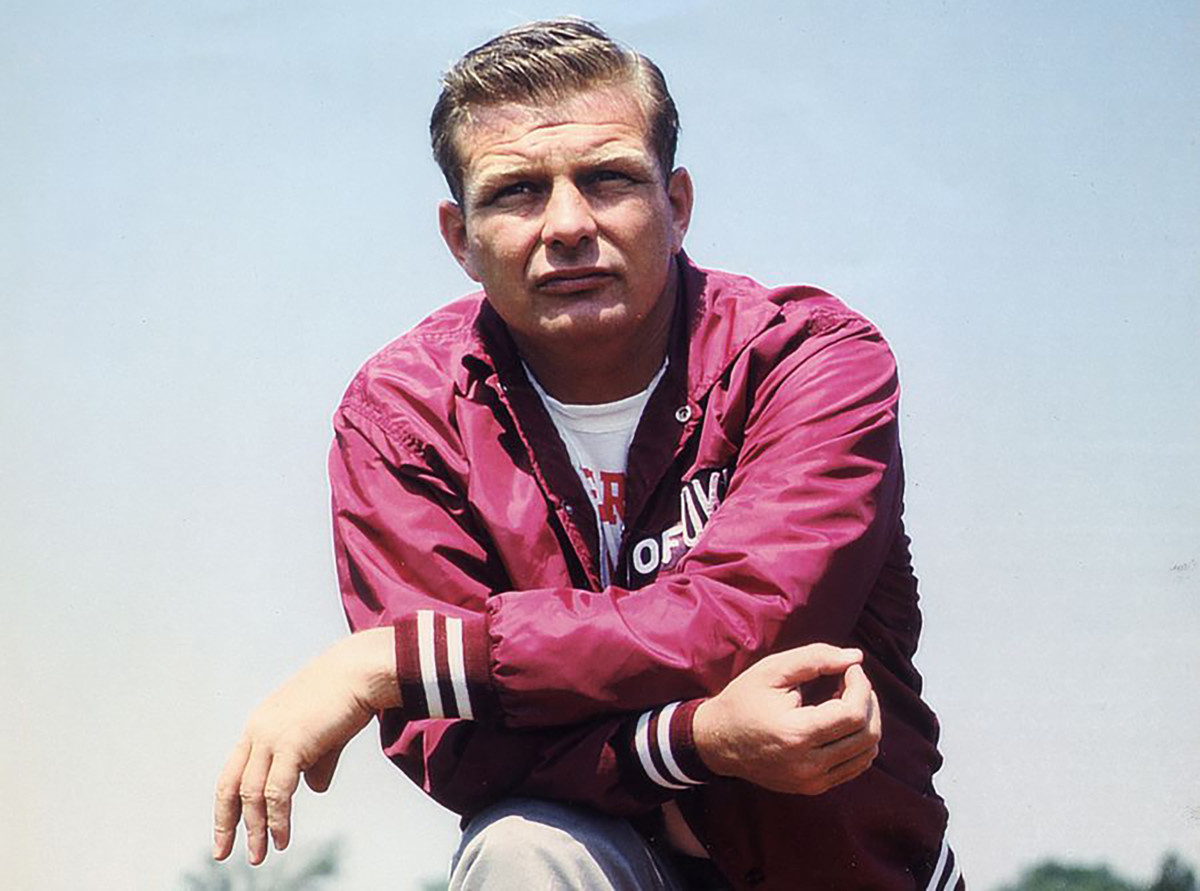
Between playing for Paul “Bear” Bryant at Kentucky and coaching for Broyles at Arkansas, Mackenzie brought a championship lineage to OU — as well as red helmets and the interlocking “OU” logo.
The Sooners were loaded with talent — Granville Liggins, Jim Riley, Eddie Hinton, Ron Shotts, Bob Warmack, Bob Kalsu, among others — but struggled to a 6-4 finish in Mackenzie’s only season.
Mackenzie’s debut went almost perfect after a scoreless first half: a shutout for the defense, two scoring drives by the backup quarterback Warmack, and a 63-yard punt return touchdown by Hinton.
Mackenzie’s Sooners went on to beat Royal and Texas for the first time in nine years, and even toppled unbeaten Nebraska on Thanksgiving.
Tragically, Mackenzie died of a heart attack at the age of 37. It was April, after a recruiting trip and in the midst of spring practice. He was replaced by a 33-year-old Sooner assistant who fast-tracked to stardom.
Sept. 23, 1967: Chuck Fairbanks
Opponent: Washington State
Outcome: 21-0 Win
Fairbanks was a young assistant at Arizona State and Houston before Jim Mackenzie hired him to coach defensive backs in 1966. When Mackenzie shockingly died of a heart attack in April 1967, Fairbanks was promoted and immediately built a winner.
The Sooners were 10-1 in Fairbanks’ first season, with only a 9-7 loss to Texas on the docket. OU started the season unranked but by the time the Sooners beat No. 2-ranked Tennessee in the Orange Bowl, they were No. 3 in the polls.
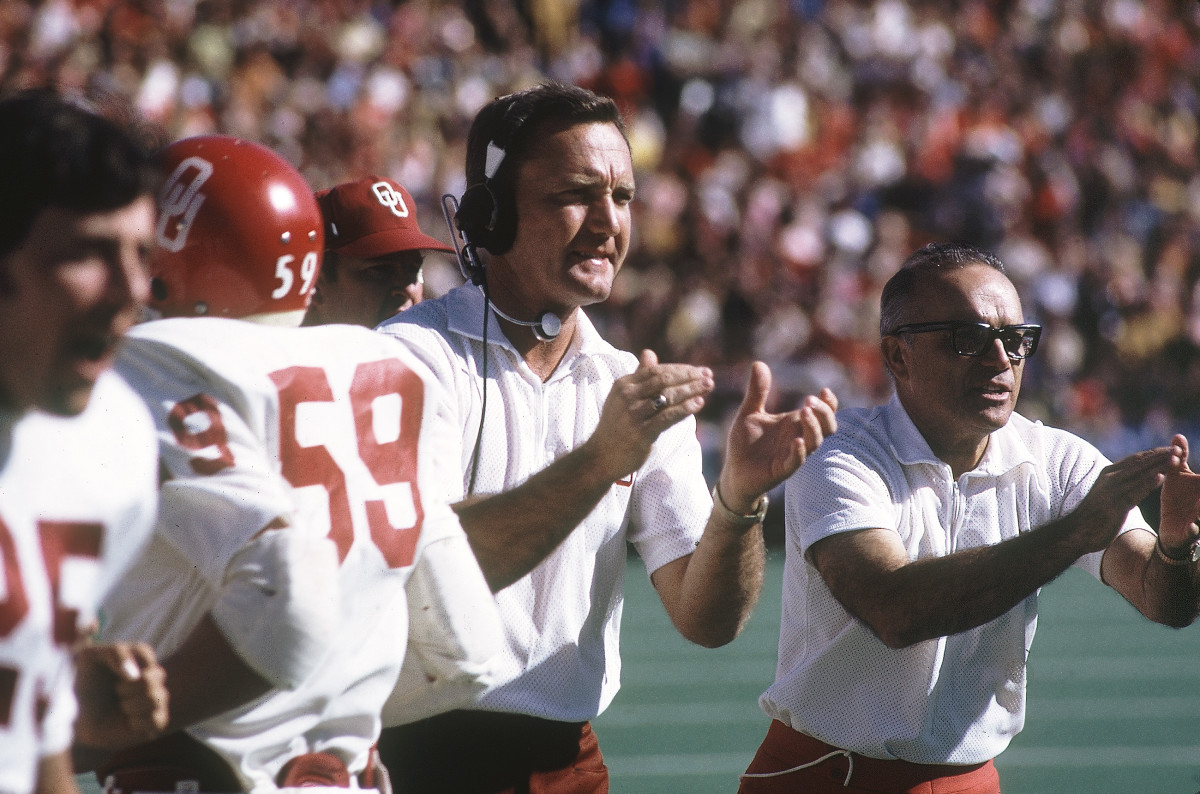
Fairbanks, from Detroit, played for Clarence Munn at Michigan State when the Spartans won the national championship in 1952.
The Sooners were loaded with All-American talent in 1967 and flexed on the Cougars with a dominant defensive performance.
OU got a touchdown from quarterback Bob Warmack on the opening drive, then added a short TD plunge from sophomore tailback Steve Owens to make it 14-0 in the second quarter. Warmack’s 17-yard TD throw to Hinton made it 21-0 in the third quarter as the Oklahoma defense yielded just 149 total yards.
Sept. 15, 1973: Barry Switzer
Opponent: Baylor
Outcome: 42-14 Win
Chuck Fairbanks left — and left the cupboard full for offensive coordinator Barry Switzer.
Fairbanks’ last two teams at OU both went 11-1 and dominated top-five opponents in the Sugar Bowl, but he left to take over the New England Patriots.
Switzer came to OU with Jim Mackenzie from Arkansas, where he played and coached for Frank Broyles and won a national championship in 1964.
Switzer inherited an OU team limited — from TV appearances and bowl games, at least — by NCAA probation.

But the talent on the Oklahoma roster would not lose a game in Switzer’s first 2 1/2 seasons. OU went 10-0-1 in 1973, 11-0 in 1974 and 11-1 in 1975 and won two national championships.
Every legend starts somewhere, and Switzer’s started with a 42-14 win over Baylor in Waco.
Steve Davis used to chuckle that he began his first preseason seventh on the depth chart but then evolved into an unbeatable wishbone wizard. His debut was unforgettable: 110 yards rushing and two touchdowns, giving the Sooners three 100-yard runners in a game (Joe Washington and fullback Waymon Clark joined him).
Davis had plenty of help from stars like Washington, split end Tinker Owens, guard John Roush, and defense loaded with All-Americans: Lee Roy, Lucious and Dewey Selmon up front, linebacker Rod Shoate and safeties Randy Hughes and Durwood Keeton.
That defense had three takeaways on Baylor’s first three possessions, and the Sooners exploded to an easy 21-0 lead.
Switzer went on to win three national championships and a spot in the College Football Hall of Fame before running into trouble at the end of the 1980s.
Sept. 2, 1989: Gary Gibbs
Opponent: New Mexico State
Outcome: 73-3 Win
With Barry Switzer forced to resign from what had become a rogue program in June of 1989, embarrassed regents turned to straight-laced, stone-faced defensive coordinator and former Switzer linebacker Gary Gibbs.
There wasn’t a lot of glory to be had in Norman during the Gibbs regime — like Switzer, his tenure was gutted by NCAA sanctions from penalties incurred by the previous coaching staff — but even with only 74 players on scholarship, Gibbs’ head coaching career did get off to a memorable start.
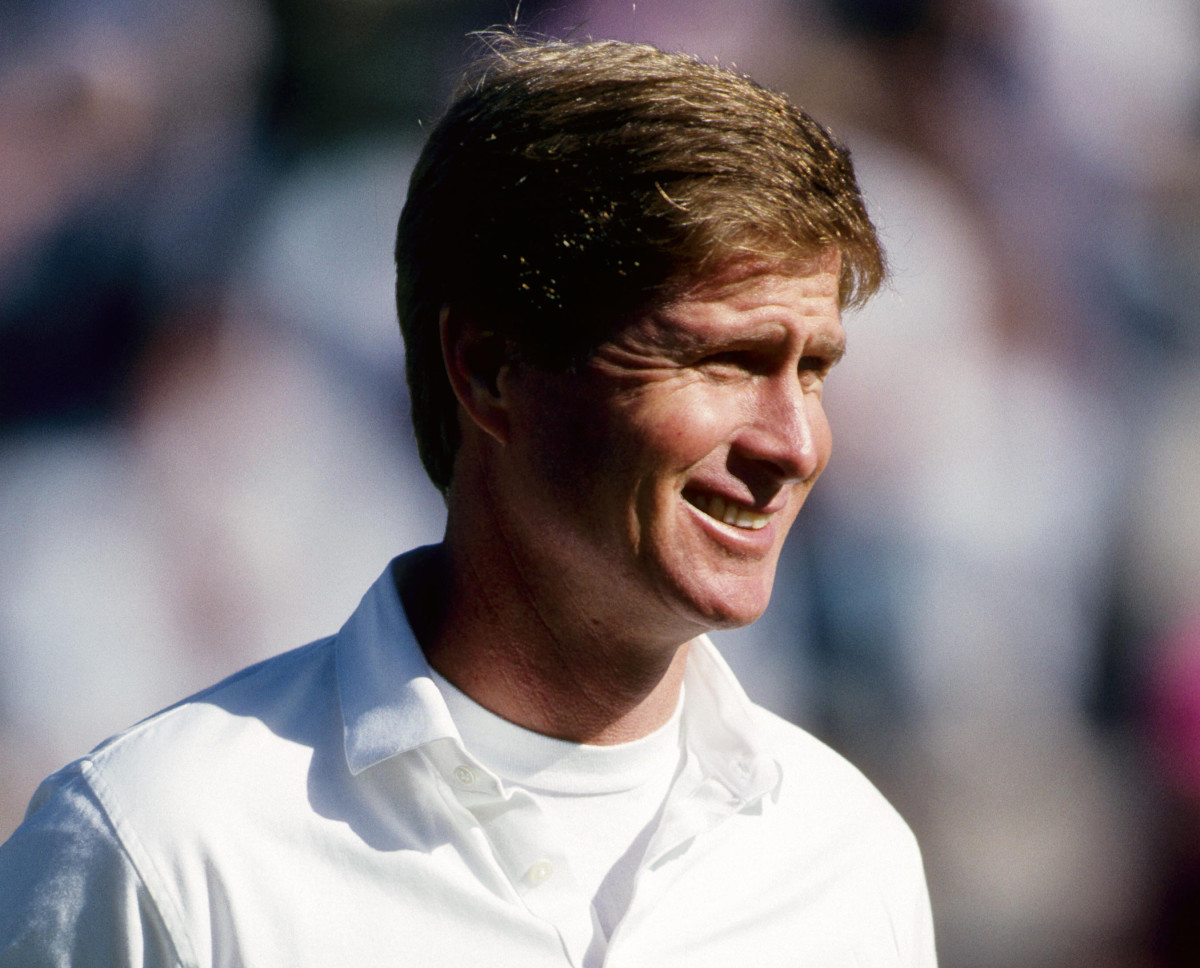
Ranked No. 15 to start the season, the Sooners routed poor New Mexico State 73-3. OU led 52-0 at half — it was Switzer who had long before coined the phrase “hang half a hundred on ‘em by halftime” — including three TDs by fullback Leon Perry and two more from halfback Ike Lewis. The Aggies went on to finish that season with an 0-11 mark.
The numbers eventually caught up to Oklahoma that year as they went 7-4 and lost to Arizona (6-3), Texas (28-24), Colorado (20-3) and Nebraska (42-25).
The Gibbs era was marked by high-profile losses. He was 1-5 against Texas (despite a higher ranking in five of those matchups), 0-5-1 against Colorado and 1-5 against Nebraska.
Sept. 7, 1996: John Blake
Opponent: TCU
Outcome: 20-7 Loss
After a one-year failed experiment under former Miami head coach Howard Schnellenberger, president David Boren and athletic director Donnie Duncan tried to breathe new life into the program by hiring another alumna — another Switzer defensive player.
But by the end of the John Blake era, Sooner Nation was pining for the mediocre days of Gary Gibbs.
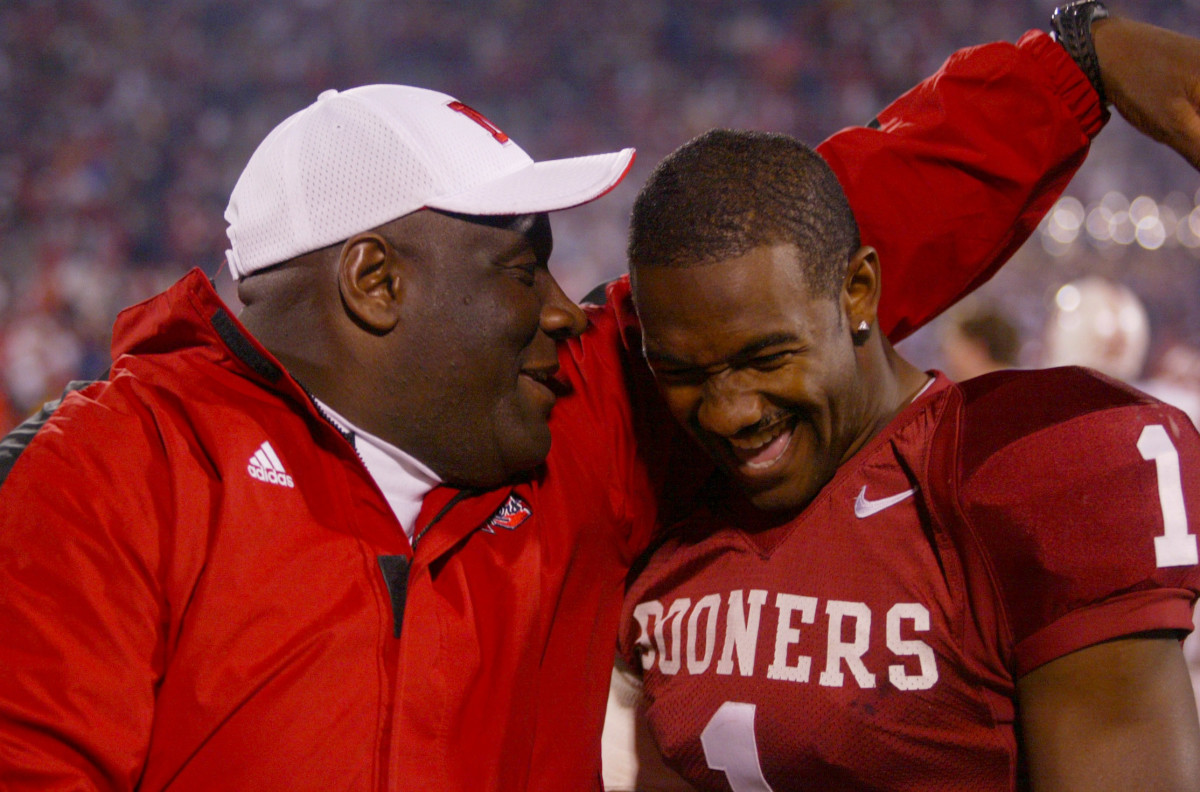
After Schnellenberger went 5-5-1 and resigned a yer and a day after taking the job, Blake — who came back to Norman after working as Barry Switzer’s defensive tackles coach with the Dallas Cowboys — oversaw the worst three-year stretch in school history, a 12-22 record and a pile of abysmal losses.
First out of the gate was a 20-7 setback in the season opener against TCU and the opening chapter of the first 0-4 start in school history.
Quarterback Eric Moore had started for Schnellenberger the year before, but he was yanked midway through the ’96 opener in favor of true freshman Justin Fuente. Neither quarterback could generate or sustain much offensive momentum as the TCU led 20-0 in the third quarter.
The inaugural year of the Big 12 Conference was not a good one for OU as the Sooners bumbled to a 3-8 record.
Sept. 11, 1999: Bob Stoops
Opponent: Indiana State
Outcome: 49-0 Win
The truly modern era of Oklahoma football traces its roots back to one man — Bob Stoops — and one game.
Stoops, the fearsome defensive coordinator under Bill Snyder at Kansas State who went on to win a national championship under Steve Spurrier at Florida, took over for John Blake on Dec. 1, 1998, and immediately declared, “No excuses.”
Stoops lived that for most of the next 18 seasons, guiding the Sooners out of the darkest times and into the longest-sustained period of success in the program’s proud history.
Still, Stoops’ debut wasn’t all that spectacular. When Indiana State came to town for the ’99 opener, the Sycamores were the first NCAA Division I-AA opponent in program history.
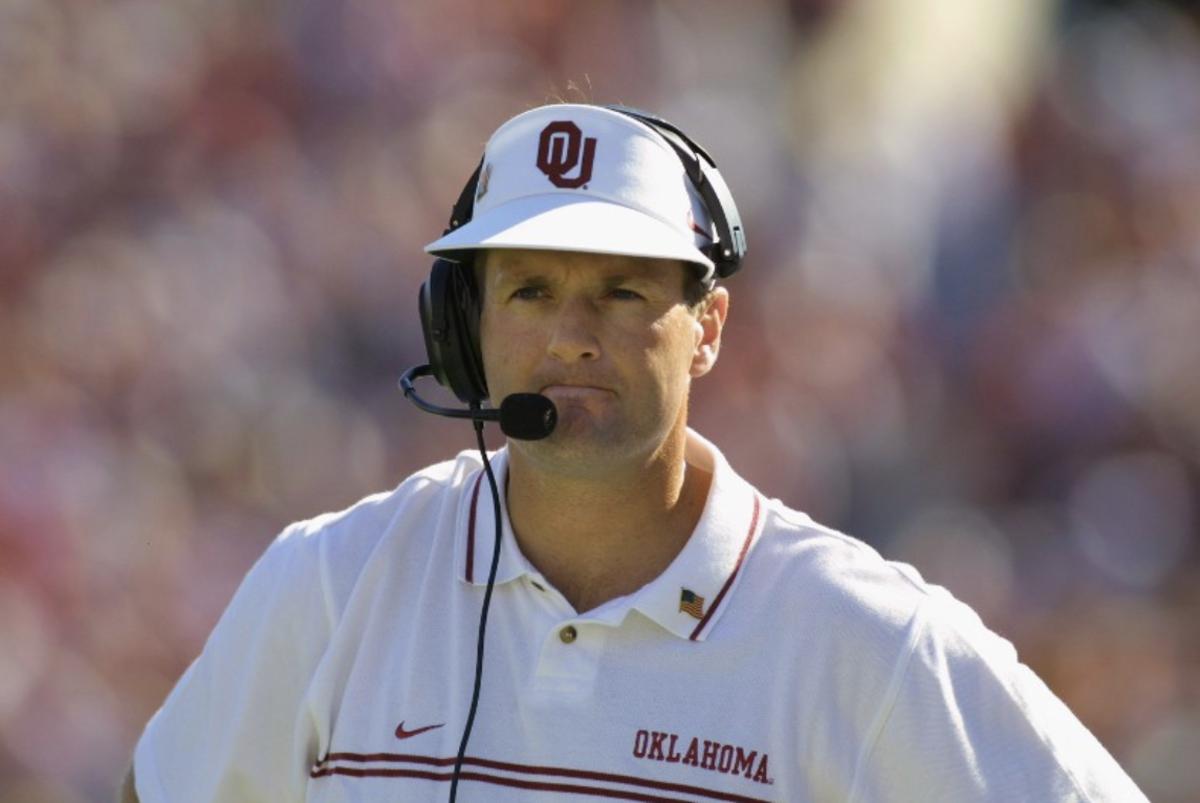
Blake clearly had recruited good players, but it took Stoops — and Brent Venables and Mike Stoops and Mike Leach and Mark Mangino — to recruit underrated stars like quarterback Josh Heupel and, after a failed redshirt attempt, running back Quentin Griffin.
Heupel was almost surgically efficient against Indiana State, completing 31-of-40 passes for 341 yards and five touchdowns — all OU single-game records. He threw TDs to Andre Woolfolk and Josh Norman and Jarrail Jackson and Julius McMillan and Ryan Daniel as the OU defense limited the Sycamores to just 195 yards total offense.
Before retiring unexpectedly ahead of the 2017 season, Stoops racked up 190 wins — the most in school history (it’s 191 now, after his Alamo Bowl triumph last year). Also in 2021, Stoops was inducted into the College Football Hall of Fame. More than either of those, Stoops’ success opened the checkbooks of countless big-money donors, who helped makeover the face of the entire campus.
Sept. 2, 2017: Lincoln Riley
Opponent: UTEP
Outcome: 56-7 Win
Lincoln Riley was a walk-on quarterback for Mike Leach at Texas Tech — for about a semester.
Leach quickly recognized his coaching genius and added him to the Texas Tech staff, and soon enough, the precocious Riley was calling plays for Ruffin McNeill at East Carolina.
When Stoops hired Riley as offensive coordinator in 2015, Riley was but 32 years old.
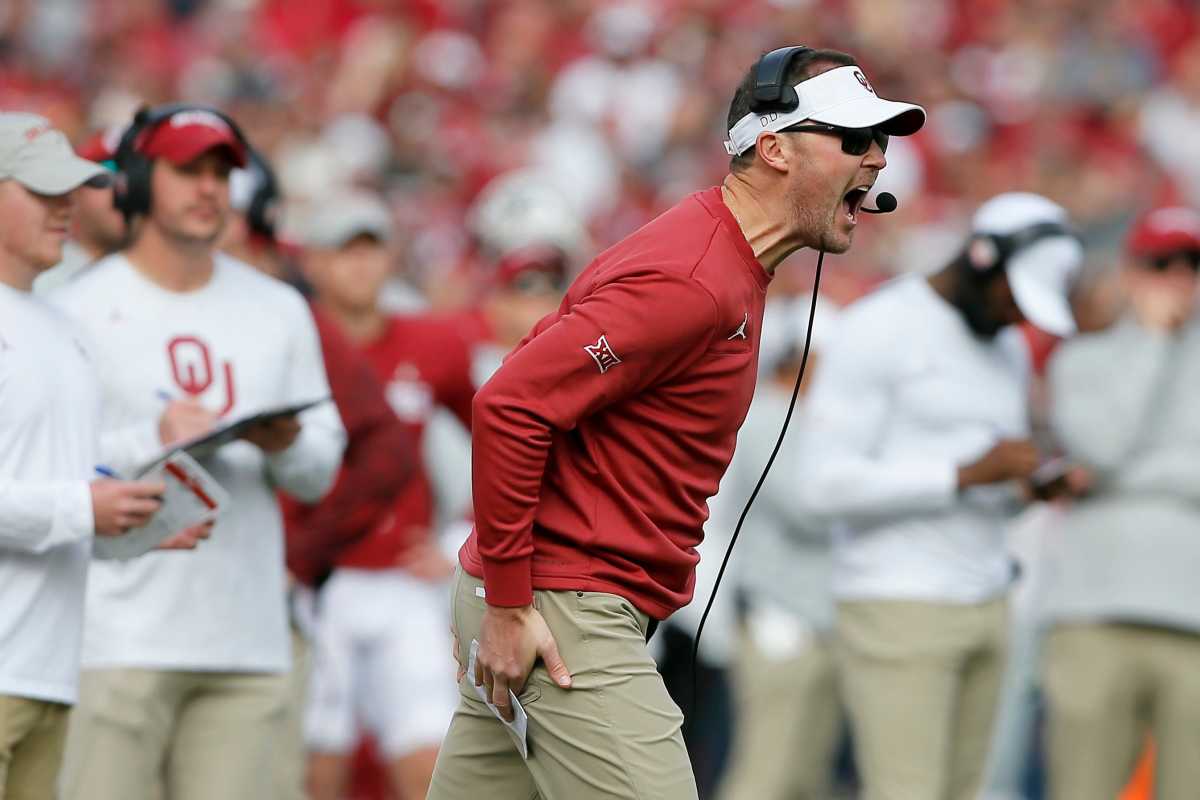
His offensive innovations and his clever play designs quickly elevated him both nationally and in Stoops’ eyes. And when Stoops decided he’d coached long enough, he resigned with the knowledge that Riley would be his hand-picked replacement.
Riley’s first squad finished 12-2, including an excruciating overtime Rose Bowl loss to Georgia in the College Football Playoff in which he may have outreached himself after jumping to an early lead.
But Riley’s debut was a stress-free affair, a 56-7 victory over UTEP. Baker Mayfield was 19-of-20 for 329 yards and three TDs and Kyler Murray was 10-of-11 for 149 yards and a TD as the Sooners threw for 496 yards and rushed for 180 and four more TDs.
Riley won four Big 12 titles and made three playoff trips, but his unseemly departure for USC after a nearly mediocre season and two crushing late defeats alienated him with Sooner Nation.
His legacy is complicated. OU fans will forever declare him Public Enemy No. 1, but he’ll also always be the first guy to coach back-to-back Heisman Trophy winners and No. 1 draft picks.
